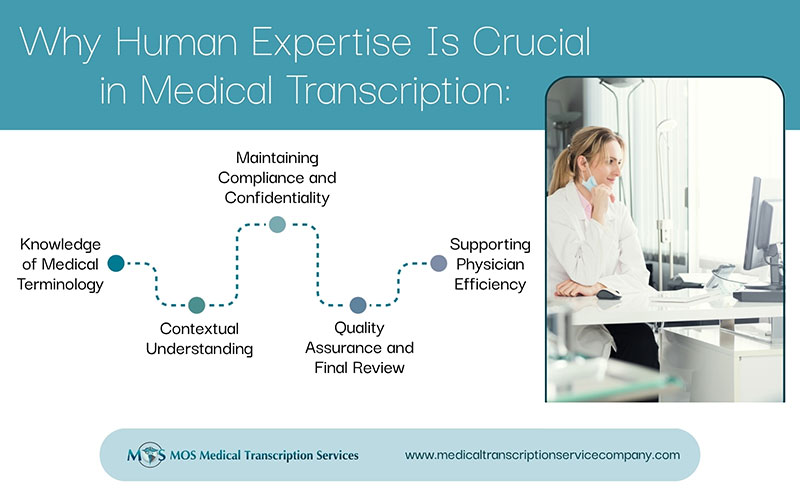
Medical practices across the country are facing unique business and workflow challenges due to COVID-19. Many practices have integrated telehealth with their EHRs and are partnering with medical transcription service providers to document virtual visits. However, sustaining operations has become difficult with cancellation of elective tests and procedures, steep drop in patients due to social distancing, and added financial stress. This is especially true for primary care offices. To keep their medical practice running, physicians need to be flexible to the changing scenario due to COVID-19. Here is the advice we rounded from credible sources.
- Set up a team for swift decision making and planning: This is a crisis situation like no other and practices need to have a task force to manage the changes it has brought about. Practice leaders should be involved in the decision making process and supported by department managers and other personnel. Medscape recommends that the team should assess everything from guidance and mandates from the governments, specialty and state medical societies to patient triage techniques and testing options, infection control practices. The team also needs to look into reimbursement policies for suspected COVID-19 triage, testing, and follow-up treatment in office or virtually and whether tasks such as medical billing and coding can be done remotely.
- Keep track of the latest developments: The federal government is working to reduce regulatory obstacles to help physicians and improve patient care.
On March 30, 2020, the Centers for Medicare & Medicaid Services (CMS) issued a series of temporary regulatory waivers in order to aid the in order to support response to the 2019 Novel Coronavirus (COVID-19). On April 3, the American Medical Association (AMA) announced that it urged Congress and the Administration to provide relief to physician practices in the Coronavirus Aid, Relief and Economic Security (CARES) Act. Even as daily work has been postponed, cancelled, or seen a decline due to the virus outbreak, physicians need to keep track of latest development and constant policy updates to protect the practice. - Evaluate financial obligations and plan for financial contingencies: With cancelled elective surgery, drop in outpatient visits, and whole or partial closure of practice locations, many providers are experiencing significant fall in revenue. Here are some tips for practice survival:
- Review their financial obligations and see which bills can be postponed
- Discuss cash flow disruptions with their vendors, landlords, and creditors and renegotiate credit or ask for more repayment time
- Develop a financial contingency plan to stay afloat during this emergency
- Explore additional resource options such as loans and relief funding
Practices may have to lay off employees or rotate staff to work alternating days, says Owen Dahl, MBA, FACHE, a medical practice management consultant(www.medicaleconomics.com). They would also need to look into options for paying personnel in the case of a temporary shutdown.
- Understand insurance coverage: Physicians need to understand what the group’s business interruption insurance will and will not cover. If a practice has to stop operation because the majority of staff or doctors are sick, it could trigger business interruption insurance coverage. Evaluating their insurance policies can help practices understand their risks, which is essential for planning and business decision making.
- Set up telemedicine consultation facilities: In the light of COVID-19, Medicare and private payers have new telehealth regulations that offer greater flexibility to treat patients. By setting up telemedicine, practices can care for their patients in a safe and effective way during the virus outbreak. Medicare now allows in-home telemedicine visits and patients can communicate with their doctors using audio only or audio-video interactive tools. Telemedicine programs can be used for virtual screenings, stay in touch with patients who may be quarantined and provide follow-up care, while keeping them out of clinics and emergency rooms.
- Assess needs for essential supplies: Practices should take stock of essential medical supplies such as respirators, personal protective equipment (PPE), face shields/goggles, surgical masks, and gowns for providers and staff, disinfectant for environmental cleaning, IV solutions, antivirals, and antibiotics, and so on. The pandemic has led to a shortage of PPE and respirators and the AMA recommends that practices should contact their supply vendors and state and local health authorities to ensure that they receive necessary supplies.
- Ensure proper processes in place for coding and claims submission: Practices should have robust measures in place to maintain documentation even in the event of a complete or partial shutdown. Collection of accounts, coding and claims submission processes can be outsourced to ensure smooth billing. Expert coders can help physicians report services using new COVID-19 specific CPT codes and guidelines released by the AMA.
- Teamwork, focus and regular communication: To keep the practice open, it’s important to keep the team together and boost employee morale. “Recognize the stress the staff is under,” says Anderson. “Make regular, timely communications about efforts to maintain the office, take care of patients, and maintain financial viability. If employees don’t have information, they get scared”, says Lisa Stevens Anderson, president of Equality Health’s Management Services Organization division (www.medicaleconomics.com). If furlough or cuts are being planned, staff must be told. Staying connected with staff can increase and strengthen their loyalty.
Operational disruptions from COVID-19 can be reduced with proper planning and cost containment strategies. As physician practices weather the storm, medical transcription companies will ensure reliable support to meet their documentation needs.


